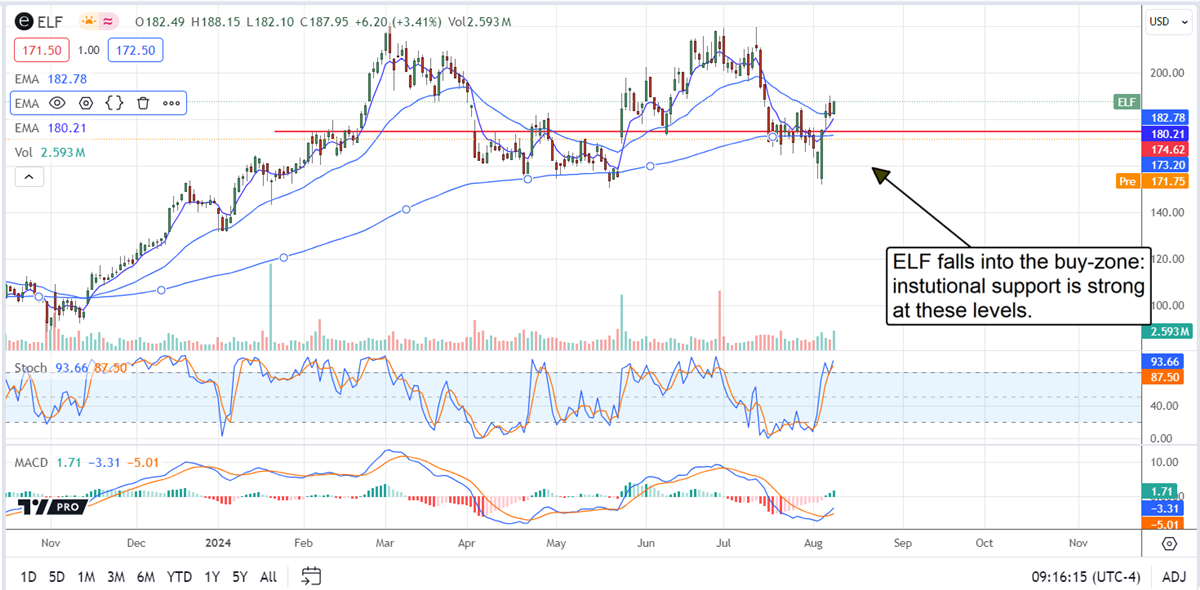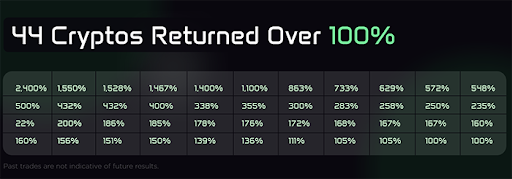Ticker Reports for August 9th
The Cannabis Sector: Profitability Takes Center Stage
The cannabis industry has experienced significant change since its inception twelve years ago. Fueled by legalization trends and evolving social acceptance, this burgeoning sector has attracted considerable investment and innovation. Canopy Growth (NASDAQ: CGC) and Aurora Cannabis (NASDAQ: ACB) are prominent players in this dynamic market sector, each seeking to establish dominance in the global cannabis market. As investors traverse this rapidly evolving industry, analyzing each company’s latest earnings reports offers a valuable window into their financial health and strategic direction. The diverse strategies employed by these two companies provide a compelling look at the industry as it matures and presents itself as a more stable and attractive investment opportunity within the stock market.
Canopy Growth: Revenue Declines & Strategic Shifts
Canopy Growth’s earnings report revealed a 13% year-over-year decrease in revenue for the first quarter of fiscal year 2025 (Q1 FY2025), reaching $66.2 million. While the decline in market share may raise concerns, investors should examine the broader context. This decrease was primarily attributed to the strategic divestment of non-core businesses, a shift away from prioritizing market share to focus on achieving profitability. This strategy is further evidenced by the company's impressive 1,700 basis point increase in gross margin, reaching 35% for the quarter.
The company's improvement can be attributed to a multifaceted strategy. Firstly, a comprehensive cost-saving program implemented across the organization resulted in significant financial savings. Secondly, a strategic shift in focus towards higher-margin medical cannabis sales allowed for increased profitability. Lastly, improved inventory management practices led to reduced inventory write-downs, further contributing to the overall improvement.
Looking beyond the revenue figures, Canopy Growth’s adjusted EBITDA loss narrowed to $5 million in Q1 FY2025, a significant improvement over the previous year. While this figure remains negative, the company’s focus on profitability is evident through its ongoing efforts to improve operational efficiency and reduce expenses. The company's free cash flow was an outflow of $55.7 million in Q1 FY2025, an improvement from the previous year, primarily driven by the completion of business transformation initiatives throughout fiscal year 2024 and a reduction in interest costs.
Canopy Growth's most notable strategic move is its move into the US THC market. The company has acquired a majority stake in Canopy USA, which now holds a significant stake in the high-quality cannabis extracts producer Jetty Extracts and the edibles brand Wana Brands. This move demonstrates Canopy Growth's commitment to capitalizing on the potential of the US cannabis market, but it also carries a significant amount of risk. Regulatory complexities and challenges within the US cannabis market require careful consideration and can hinder rapid expansion.
Aurora Cannabis: Harvesting Profits in the Medical Market
Aurora Cannabis, on the other hand, has chosen a different path, focusing on the global medical cannabis market. Aurora Cannabis’ earnings report showed a positive free cash flow of $6.5 million and a 12% year-over-year increase in net revenue for Q1 FY2025, reaching $83.4 million. This strong growth can be primarily attributed to the success of Aurora's global medical cannabis segment. The company’s solid performance in this segment highlights the strategic advantage of targeting international markets with favorable regulations and less competition.
Aurora Cannabis' commitment to achieving sustained profitability is further evidenced by its impressive year-over-year increase in adjusted EBITDA. The company reported a $4.9 million adjusted EBITDA for Q1 FY2025, an 87% improvement over the previous year. This improvement can be attributed to a combination of revenue growth, cost optimization, and operational efficiency improvements.
Aurora's strategy focuses on building a sustainable business model through disciplined growth, operational excellence, and a commitment to achieving consistent profitability. This approach emphasizes long-term value creation, prioritizing profitability over rapid expansion and minimizing risk in a dynamic and complex market.
Contrasting Strategies in a Competitive Landscape
The strategies employed by Canopy Growth and Aurora Cannabis highlight the different paths to success in the cannabis sector. Canopy Growth’s aggressive US expansion strategy carries significant potential for high growth but also presents considerable risk due to the complexities of US regulation. Aurora Cannabis' focus on global medical cannabis offers a potentially less volatile and less explosive growth trajectory but emphasizes a disciplined approach to achieving profitability and minimizing risk.
While both companies are making strides in their respective focus areas, investors must carefully consider the strengths and weaknesses of each strategy. Investors seeking high-growth potential with a higher risk tolerance may favor Canopy Growth, while those seeking a more stable and less volatile investment may favor Aurora Cannabis. Ultimately, the choice depends on individual investment strategy, risk appetite, and market outlook.
The Cannabis Sector: Green Shoots and Lingering Shadows
Despite Canopy Growth and Aurora Cannabis' recent financial performance, the cannabis sector still faces significant challenges. Regulatory hurdles, pricing pressures, competition from black markets, and achieving consistent profitability remain key obstacles for all industry players. However, the cannabis sector's long-term potential remains significant. Legalization trends are expanding globally, consumer acceptance is growing, and innovation is driving the development of new products and services.
Navigating the cannabis sector requires careful due diligence, a long-term investment horizon, and an understanding of the evolving regulatory landscape. Investing in cannabis stocks carries inherent risks but offers substantial potential for reward. Investors must carefully assess each company's risk-reward profile, considering its business model, strategic direction, and financial performance.
Picking the Right Seeds for Your Portfolio
The earnings reports of Canopy Growth and Aurora Cannabis reveal two distinct approaches to navigating the evolving cannabis market. Canopy Growth's aggressive U.S. expansion strategy promises significant growth potential but carries a high risk due to the regulatory complexities of the US market. Aurora Cannabis' focus on global medical cannabis offers a potentially more stable and less volatile growth trajectory, prioritizing profitability and minimizing risk. The cannabis sector presents a complex and evolving landscape with exciting opportunities and significant challenges.
Investors must carefully consider their investment goals, risk tolerance, and market outlook when making decisions about the cannabis sector. The potential for significant growth exists, but so do substantial risks. Conducting thorough research, staying informed about market trends and regulatory developments, and selecting companies with a proven track record of financial performance and a clear strategic vision are essential for successful investment in this rapidly growing industry.
Tim Sykes' Urgent Trade Alert: "Make this move now"
WARNING: 80 Wall Street banks are gearing up for MASSIVE D.C. shock
This $2 trillion D.C. shock is NOT about Trump or Biden dropping out of the race…
Amazon's Stock Plunge: Is a Prime Buying Opportunity Knocking?
It’s not often you see a $1.75 trillion market cap stock drop nearly 20% in just two sessions, but that’s exactly what went down with Amazon.com Inc (NASDAQ: AMZN) this week. It was the biggest selloff in a long time, and what made it all the more complicated for investors was that there were several factors in play.
The first was the broader softening seen in equities since early July, with tech stocks like Amazon affected in particular. This meant that though Amazon started the month with a record high, as NVIDIA (NASDAQ: NVDA) started to pick up an alarming downward pace, investors were forced to reconsider their other tech positions.
This risk-off sentiment gathered more momentum than last week, with a combination of lower-than-expected job numbers and the implosion of Intel (NASDAQ: INTC) injecting some real fear. Concerns that the Fed may have been too slow to cut rates and, by being so, have risked pushing the economy into a recession, which had an immediate effect. And so anytime a benchmark index like the S&P 500 drops 10%, you can be sure that even a behemoth like Amazon is going to feel some pressure.
Amazon's Lackluster Earnings
In addition to the broader market turning down and investors being a bit more risk-averse, Amazon also delivered a lackluster earnings report. They managed to land a solid beat on analyst expectations for their EPS, which came in 22% higher than expected, but they missed on revenue. The latter print was still up 10% year on year, but it was a rare and worrying miss.
In addition, Amazon’s forward guidance was also mixed, to put it mildly. Against a consensus for $158.33 billion in third-quarter net sales, Amazon’s leadership forecasted between $154 billion and $158.5 billion. There were some bright spots, such as year-on-year growth of 19% in the company’s AWS unit, against expectations on the street for this to be closer to 17%.
All this conspired to send Amazon shares down 17.5% between last Thursday and Monday, which meant they’d shed as much as 25% from July’s all-time high. This is a confirmed correction, and worryingly for the bulls at least, it put Amazon back trading below where it had spent much of the pandemic.
Analysts Reaffirm Bullish Ratings for Amazon
However, there are several reasons to think this drop was overdone and that it’s actually a solid buying opportunity. For starters, several analysts reiterated their Buy ratings on the stock this week, with Morgan Stanley and Rosenblatt Securities weighing in with price targets of $210 and $221, respectively.
Considering Amazon was trading for less than $170 during Friday’s session, that’s pointing to a targeted upside of at least 30%. They’re not alone in their optimism either, with Barclays, Wedbush, Bank of America, and Piper Sander, to name just a few, all also reiterating their Buy, Overweight, or Outperform ratings, and all with price targets well above $200.
Taking Advantage of Amazon's Stock Dip
For those of us considering taking advantage of the dip and buying into this theory that the drop is way overdone, the consistently higher closes from last Monday’s low lend a lot of weight. While the pessimist will say that the stock is still down more than 15% from July, the optimist could say it’s actually up 10% since Monday.
There’s also the fact that Amazon’s relative strength index (RSI), a popular technical measure of how overbought or oversold a stock is, was screaming extremely oversold as recently as Wednesday. This week’s gains have pulled it out of the danger zone, as buyers have been more than willing to step in and snap up shares at discounted prices. A higher close next week would all but confirm the recovery rally is underway, putting Amazon on a clear track back toward the $200 level.
The #1 Crypto for 2024 (3 Cent Coin)
Chris Rowe – the man who recommended Amazon in 1998… Bitcoin and Ethereum in 2017…
And has spotted 44 different coins that have returned over 100%...
Today, he is now making the biggest crypto call of his ENTIRE career…
Buy the Dip in e.l.f. Beauty: Analysts Point to a New High
Valuation concerns and slowing growth led e.l.f Beauty (NYSE: ELF) shares to fall following its Q1 release, but this is a buy-the-dip opportunity. The results were better than expected, including increased market share and improved leverage, leading to improved guidance and positive analyst revisions.
Among the takeaways for investors is the bullish sentiment trend. Analysts' revisions in the first half lifted sentiment to Strong Buy from Moderate Buy and the price target by nearly 100%, putting the stock on MarketBeat’s list of Top Rated Stocks. The Top Rated stocks are the 100 stocks with the highest average analyst rating over the last 12 months; ELF is ranked 24th. The consensus price target implies a move back to the top of the range, but most recent targets, including the fresh targets issued since the release, are well above it, suggesting a new all-time will be reached soon.
e.l.f. Beauty Has Beat and Raise Quarter; Shares Fall
e.l.f. Beauty had a good quarter, growing by 50% with the addition of Naturium in the mix. The company reports 250 basis points of share gains with more expected, and strength was driven by retail and eCommerce channels.
The company shows mounting leverage among cosmetic consumers, with consumption of its cosmetic products up 26% compared to a decline in the overall category. Market share was gained versus all the legacy cosmetic companies, and Revlon lost the most. The company also shows increased leverage in Skincare, with consumption up 45% compared to 1% for the category, aided by share gains. e.l.f. is now the #9 leading skincare brand, rising three positions compared to last year. Naturium grew by 16%, and International grew by 90%.
Margin is another area of strength, with the gross margin improving by 80 basis points to 71% and the operating margin outperforming. SG&A costs rose compared to last year but far less than expected, leaving the adjusted earnings at $1.10 or 3000 basis points above the consensus.
Guidance for the year is good, but it is weighing on the market for shares. The company raised its forecast for revenue and earnings, putting the low end of the expected EPS range above the prior high end, but it is still shy of the consensus. Guidance may be cautious in light of the Q1 strengths, but there is concern that tariffs on Chinese imports will impact results as the year progresses. The caveat is that tariffs have yet to be passed, and there is potential for reaccelerated growth in 2025. The FOMC is expected to cut interest rates soon, a move expected to reinvigorate economic activity and consumer strength globally.
e.l.f Beauty Builds Value for Shareholders
The critical details for investors are in the balance sheet. The balance sheet shows reduced cash and increased liabilities due partly to the Naturium acquisition, but increased receivables, inventory, property, intangibles, and goodwill offset those details. The net result is a 50% increase in shareholder equity, and the balance sheet is still a fortress. Long-term debt and finance lease obligations are only about 1.5x the remaining cash balance, the cash flow is positive, and total liabilities run at less than 0.75x assets. This company can continue to invest in its profitable growth through acquisitions and other means.
The institutions support the price action in e.l.f. in 2024, and this trend will likely continue. The stock price is down following the release, in the range where buying was strongest in Q1 and early Q3, which will likely spark another round of inflows. The risk is that early, pre-market price action is below critical support and potentially strong resistance at the $180 level. If this market can’t get back above there quickly, it could become range-bound between $150 and $180.







0 Response to "🌟 The Cannabis Sector: Profitability Takes Center Stage"
Post a Comment